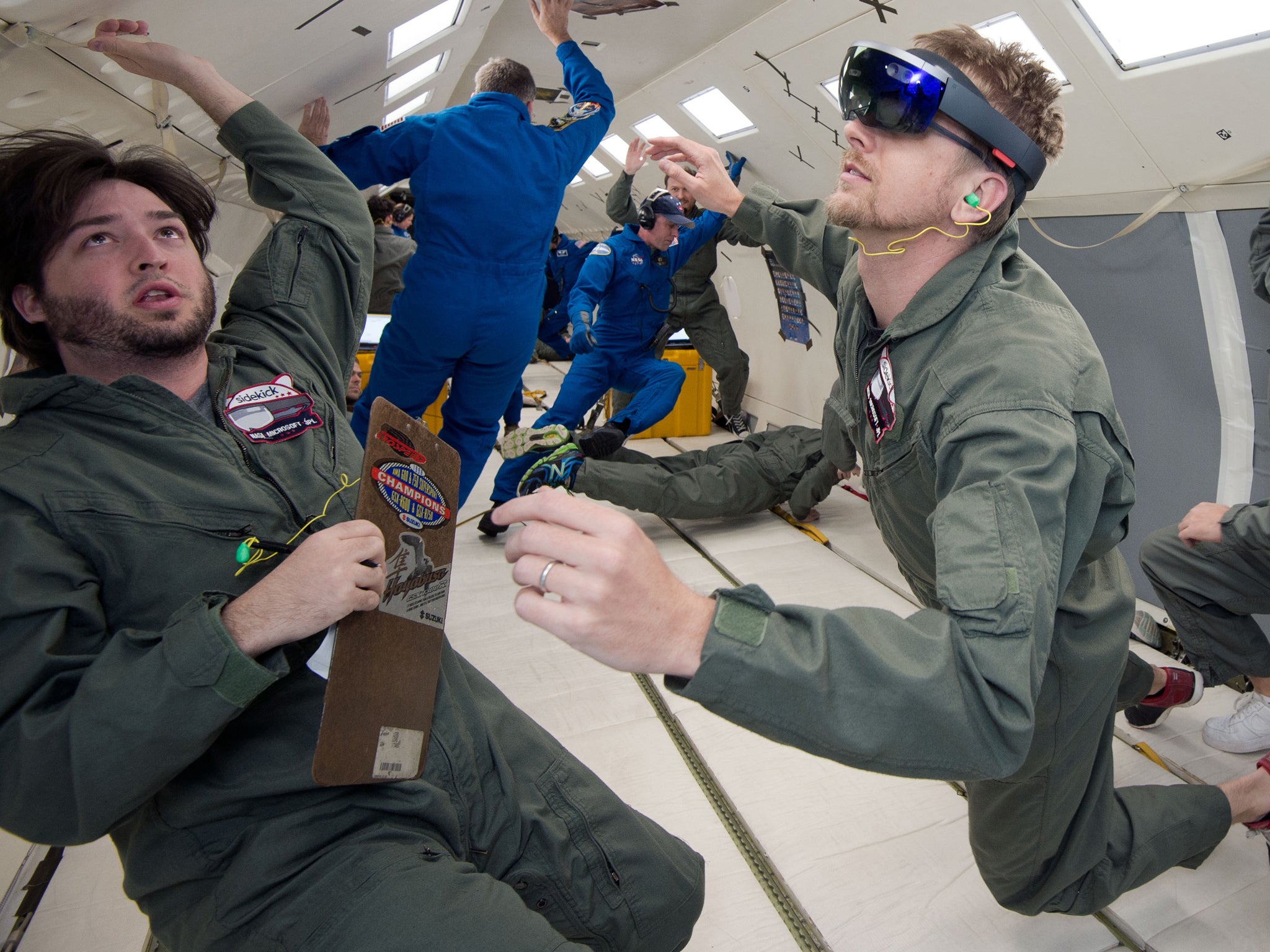Nasa astronauts to take Microsoft's HoloLens augmented reality headset to space
‘Project Sidekick’ will allow astronauts to be helped out with tasks by people on the ground

Your support helps us to tell the story
From reproductive rights to climate change to Big Tech, The Independent is on the ground when the story is developing. Whether it's investigating the financials of Elon Musk's pro-Trump PAC or producing our latest documentary, 'The A Word', which shines a light on the American women fighting for reproductive rights, we know how important it is to parse out the facts from the messaging.
At such a critical moment in US history, we need reporters on the ground. Your donation allows us to keep sending journalists to speak to both sides of the story.
The Independent is trusted by Americans across the entire political spectrum. And unlike many other quality news outlets, we choose not to lock Americans out of our reporting and analysis with paywalls. We believe quality journalism should be available to everyone, paid for by those who can afford it.
Your support makes all the difference.Nasa is working with Microsoft to take its augmented reality headset into space, and use it to help astronauts do difficult tasks while in orbit.
The agency will be able to use Microsoft’s new headset to add extra information to the spacecraft. That might let people see instructions on what buttons they should be pressing, for instance, or give people on the ground the ability to see from an astronauts perspective.
The first pair of the devices will head up into space on Sunday, on board a resupply mission that is being flown up by SpaceX, the private rocket company.
The HoloLens is a special headset that allows people to see virtual images displayed on top of the real world. It was introduced by Microsoft as part of the launch of Windows 10.
“HoloLens and other virtual and mixed reality devices are cutting edge technologies that could help drive future exploration and provide new capabilities to the men and women conducting critical science on the International Space Station,” Sam Scimemi, director of the ISS program, said in a statement. “This new technology could also empower future explorers requiring greater autonomy on the journey to Mars.”
The two organisations have already been testing the headsets on Nasa’s Weightless Wonder C9 jet. That plane goes into free fall to simulate the microgravity environment of the space station.
The headsets will be used in two modes: Remote Expert Mode and Procedure Mode. Remote Expert Mode uses Skype to let ground operators see through the eyes of an astronaut, letting them give instructions and even draw on the augmented reality world that the crew member is seeing. Procedure Mode puts special illustrations on top of objects in the space station, potentially reducing the amount of training needed and helping out astronauts on long missions deep into space where they might not be able to talk to ground control.
Initially, the astronauts will only turn on the devices and check that they work. They will start using Sidekick functionality properly by the end of the year, according to Nasa.
Join our commenting forum
Join thought-provoking conversations, follow other Independent readers and see their replies
Comments